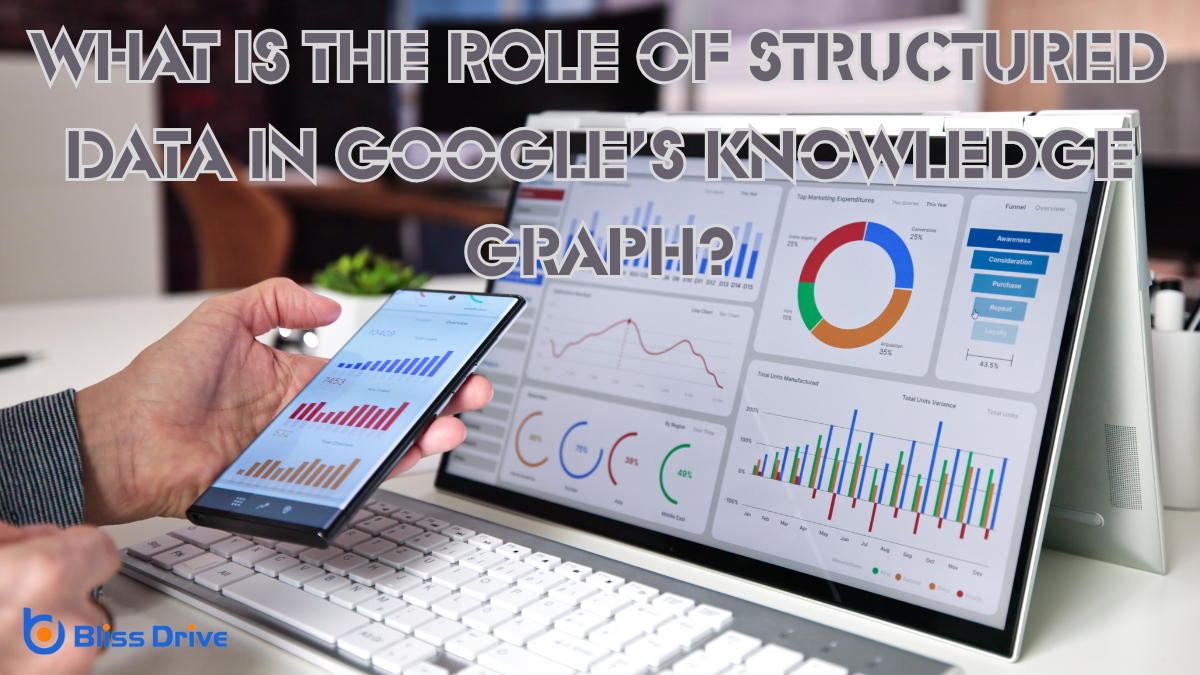Learn More About Us

Structured data is essential for enhancing Google's Knowledge GraphA knowledge base used by Google to enhance search results with information gathered from a variety o... by giving search engines a clear understanding of content. It acts like a blueprint, organizing information about real-world entities and their relationships. By doing so, it improves the accuracy and relevance of search results. Structured data also increases the likelihood of your content appearing in rich snippetsEnhanced search results featuring extra information like ratings or images., offering better visibility. Explore further to discover how it links with AI for refined search efficiency.
Structured data is like a secret language that helps search engines understand the content on your website. By using this language, you’re telling search engines exactly what specific pieces of information mean.
Imagine you have a page with a recipe. Without structured data, search engines see text and images but aren’t sure of their purpose. With structured data, you make it clear that "20 minutes" refers to cooking time and "2 cups of flour" is an ingredient.
You’re fundamentally providing a clear roadmap for search engines, improving how they interpret your content. This clarity enhances visibility, making it more likely for your content to appear in rich snippets.
With structured data, you’re not just speaking to users but also communicating effectively with search engines.

Since its introduction in 2012, Google’s Knowledge Graph has greatly transformed how information is organized and retrieved on the internet. You might wonder how this evolution unfolded.
Initially, it focused on understanding entities and their relationships. Over time, it expanded its scope and capabilities. Here’s how it evolved:
This evolution has made searches more intuitive, providing you with quick and relevant answers, enhancing your overall search experience.
While maneuvering the vast sea of online information, you might notice how quickly you find what you need. This efficiency isn't by chance; it’s structured data working behind the scenes. By organizing information into standardized formats, structured data makes it easier for search engines to understand and retrieve relevant content.
When you type a query, structured data helps deliver precise results, turning a potential data overload into a streamlined experience.
Imagine structured data as a skilled librarian who knows exactly where each book is located, cutting down your search time noticeably. It enriches snippets, improves relevance, and enables features like rich results, ensuring you see the most pertinent information first.
When you perform a search, the backbone of the results you see involves structured data working seamlessly with search engine algorithms. This data is organized to help search engines understand and categorize information effectively.
To break down the mechanics:

Structured data not only organizes information but also forms the foundation for understanding real-world entities and their intricate relationships.
When you search for something online, it's not just about keywordsWords or phrases that users type into search engines to find information.. Google's Knowledge Graph uses structured data to identify entities like people, places, or things, and understands how they're connected.
Imagine searching for "Einstein" and getting not just facts about him, but also his connection to theories, institutions, or other scientists. This web of relationships helps Google deliver more relevant and insightful results.
Schema markupCode added to a website to help search engines understand the content. acts as a translator between your website's content and search engines, helping them understand the context and meaning behind your data. By implementing schema markup, you enrich your site’s content, making it more accessible and recognizable to search engines.
This structured data component is essential because it tells search engines how to interpret your content accurately. Here’s why schema markup is critical:
Understanding schema markup can greatly improve how your content is perceived online.
By incorporating structured data into your website, you open up a myriad of benefits that can greatly enhance your online presence.
First, it helps search engines understand your content better, which can leadA potential customer referred by an affiliate who has shown interest in the product or service but h... to increased visibility in search results. Rich snippets, such as star ratings or product prices, catch users' eyes and increase click-through rates.
Additionally, structured data can improve your site’s chances of being featured in Google's Knowledge Graph, boosting authority and trustworthiness.
You'll also enjoy better indexingThe process of adding web pages into a search engine's database., as search engines can process and categorize your content more efficiently. This efficiency leads to a more organized website, ultimately improving user experience.
Adopting structured data is a strategic move that positions your site ahead of competitors in the digital landscape.

You've seen the benefits of structured data, but real-world examples can show its true impact.
Consider how businesses like yours have successfully implemented structured data to boost search visibility.
When exploring the impact of structured data on Google's Knowledge Graph, real-world case studiesIn-depth analyses of specific instances or examples to highlight success stories or lessons learned.... provide compelling evidence of its effectiveness.
You're probably wondering how businesses are actually implementing this. Let's look at a few examples:
Although structured data might seem like a technical add-on, its impact on search visibility is considerable and measurable. Think of it as a way to speak Google’s language, making your content more understandable.
When you implement structured data, you’re enhancing how search engines interpret your site, which can greatly boost your visibility.
Consider the case of a local restaurant that added structured data to its site. They saw a marked increase in local search results and voice searchUsing voice commands to search the internet or perform actions on a mobile device. traffic.
Similarly, a retail business utilized structured data and experienced improved rankingsThe position at which a website appears in the SERP. and richer search snippets, leading to higher click-through rates.
Embracing structured data isn’t just about keeping up with technology; it’s about staying ahead in search visibility and making your content accessible to more eyes.
You're standing at the forefront of search technology, where evolving data standards promise to reshape how information is organized and accessed.
By embracing these changes, you'll experience enhanced search experiences that feel more intuitive and personalized.
With AI integration, the future of structured data in search technology becomes even more exciting, offering smarter, more efficient ways to find exactly what you need.
As search technology advances, evolving data standards play an essential role in shaping the future of structured data. You need to stay informed about these changes to effectively leverage them.
Consider these key aspects:
When structured data is effectively utilized, it transforms search technology by providing enhanced search experiences that are more intuitive and relevant to users.
You can see this transformation in features like rich snippets, which offerThe specific product or service being promoted by affiliates. concise, direct answers to your queries right in the search results. This means you don’t have to click through multiple pages to find the information you need.
Furthermore, structured data helps search engines understand the context and relationships between different pieces of content, making your searches more accurate.
Imagine searching for a movie and receiving details like release date, cast, and reviews instantly.
Structured data guarantees that your search results are tailored to deliver the most valuable and precise information, enhancing your overall experience.
Structured data and AI are revolutionizing search technology by working hand in hand to deliver predictive and personalized experiences.
When you integrate structured data with AI, you enable smarter search capabilities. AI uses structured data to better understand user intent and context, ensuring more accurate results.
Here’s how this integration benefits you:
By embracing structured data, you’re revealing a world of possibilities for better visibility and user engagementThe level of interaction and involvement users have with social media content.. Google’s Knowledge Graph relies heavily on this data to understand and connect real-world entities, making your content more accessible and relevant. With schema markup, you’re providing clear signals to search engines, enhancing information retrieval. As search technology evolves, staying ahead means leveraging structured data’s full potential, ensuring your web presence is both robust and future-ready.
